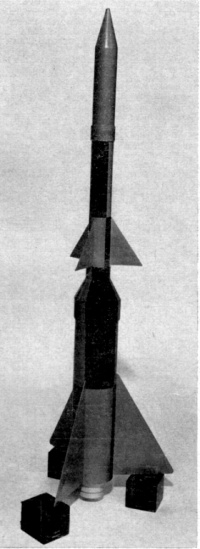Project CHARM
From The Space Library
Canadian High Altitude Research Missile was a project undertaken in late 1957 by engineers at the de Havilland Company of Canada, based in Downsview Ontario. The group of 21 engineers founded the Canadian Astronautical Society to undertake the building and testing of the rocket which they hoped would reach an altitude of 100,000 feet with a scientific payload of one pound. It was to have been equipped with the ability to measure temperature, pressure and acceleration.
The two-stage rocket was to be powered by a solid fuel mixture of asphalt and potassium perchlorate which had been developed at the Guggenheim Aeronautical Laboratory. The rocket would use this fuel in a radial burning configuration.
The first engine test took place on private property near Toronto in mid March 1958. The engine exploded. A second firing took place Jul 30 1958 which also failed. On Oct 1 1958 a seventh burn was more successful with a 200 lb thrust generated for about 10 seconds. On Nov 5 1958 the eighth firing produced 800lbs of thrust on the test stand.
CHARM was to have been continued into 1959 and 1960 but was entirely financed by volunteer money and time. It would never fly.
Canadian High Altitude Research Missile full-scale wooden mockup. (circa 1958)

